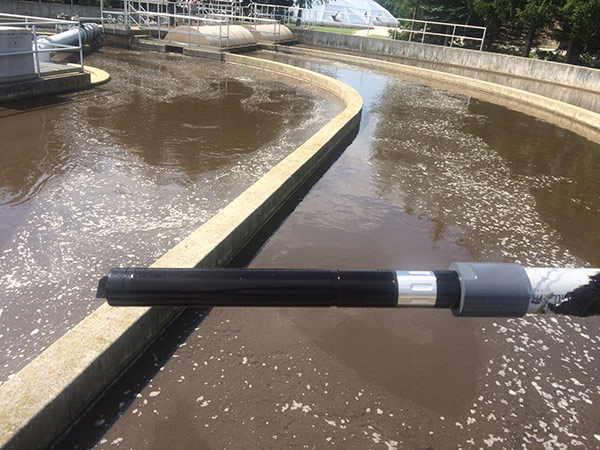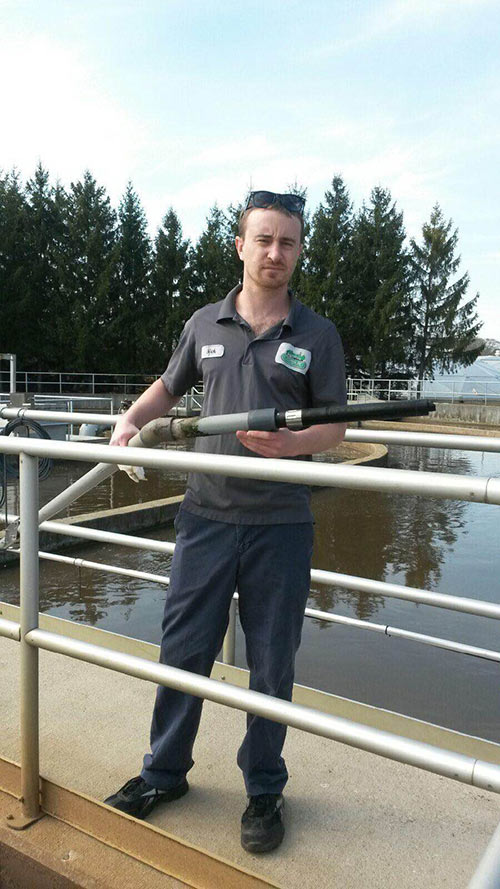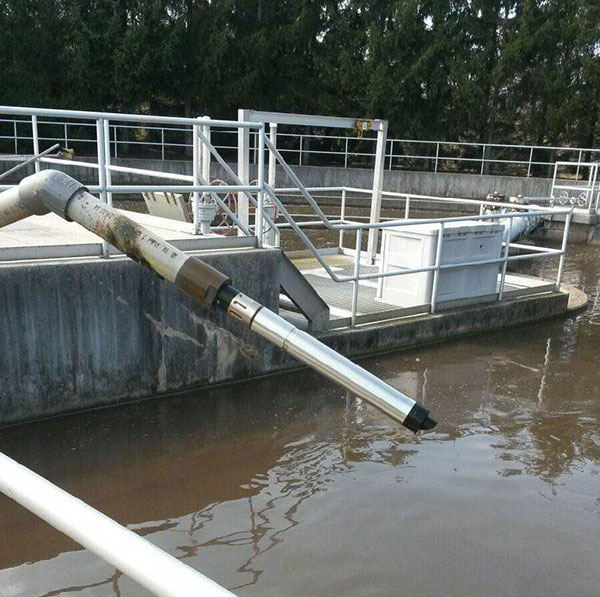Water Quality Monitoring at a WRRF Survives Lighting Strike
The old adage is that lightning never strikes the same place twice. But if it does, the team at the Cedarburg Wastewater Treatment Plant won’t be concerned about their water quality monitoring system. After all, they’ve seen it before, after a 2014 strike blew out one of their aerator drives and its motor, but required only a reboot of their YSI IQ SensorNet 2020 wastewater process monitoring system - to get it up and running again.
“It was a freak thing we’d never had any experience with before,” Cedarburg wastewater operator Nick Meurer recalls of the storm, which blew through on August 19, 2014. “It was a pretty good-sized storm—it knocked out communications in one of our buildings. We had a YSI DO [dissolved oxygen] probe in the second ring of an oxidation ditch. The lightning probably struck the channel, spread across the water, and collected on the probe.”

The FDO (optical dissolved oxygen) probe was struck by lightning. Photo Credits: Mark Duerr, Mulcahy Shaw
Lightning bolts can pack 100 million to 1 billion volts and can heat the surrounding air up to 60,000 degrees Fahrenheit. Meurer says the voltage probably traveled from the DO probe to the controller through the network cable, temporarily knocking out the 2020 controller. The strike also destroyed the aerator drives in a building 50 yards away.
Back in Action
The motor and drive for one of Cedarburg’s six aeration units were destroyed. But the 2020 controller was back up and running promptly and continued to provide reliable data without expensive repairs or replacement. It was likely electroplated during the blast, says Mark Duerr, instrumentation sales manager for Cedarburg-based Mulcahy Shaw Water, who helped the wastewater plant team design and install its YSI system. 
The plant had upgraded to the IQ SensorNet a few months before the storm, Duerr says, installing the 2020 controller and running six new sensors into it: two optical, luminescence-based FDO® 700 IQ probes to measure dissolved oxygen; two IFL 700 IQ interface sludge blanket level probes, a ViSolid® TSS (total suspended solids) probe, and a SensoLyt® ORP (oxidation/reduction potential) probe. In all, the 2020 universal controller is capable of networking and controlling up to 20 individual channels, so Cedarburg can easily add additional measurements in the future—all that’s required to expand is a new cable and probe.
By replacing traditional-style analog probe/transmitter instruments with the networked, digital IQ SensorNet system, Duerr says, the City of Cedarburg saved money on hardware. As it turns out, they also set themselves up for a quick recovery from a strike from Mother Nature.
”Entering settings into the 2020 is easy, Meurer adds. “It’s user-friendly,” he says. “The user interface of the 2020 is easy to navigate, especially compared to the instruments we had from the ‘90s and early 2000s. It’s a graphic interface, it tells you specifically what you’re dealing with, and there’s a lot more screen to work with.”
Managing the probes is easy, too. The FDO 700 uses an optical-based sensor so there are no membranes or electrolyte to replace. Instead, the probe uses a sensing cap that has a 2-year warranty. The replaceable cap on the FDO 700 probe sends its coefficients to the 2020 XT controller automatically when it is installed on the sensor probe, so there is no need for calibration or manual entry of calibration coefficients.
Additionally, the unique angled cap design eliminates interferences from aeration bubbles hitting the sensor. (Watch, Quick Angled Cap Design Deflects Bubbles video). Also, since the probe is detachable from the cable, the cap can be replaced in seconds, in the comfort of a sheltered location.
In fact, Meurer says he has spent just a little extra time on the lightning-blasted DO probe, checking its calibration a couple of times since the storm to ensure that it’s in working order. It’s been right on target, he reports.
Otherwise, the only maintenance he has had to perform on the YSI DO probes has been wiping the sensor caps and membranes with a cloth once a month and periodically changing the caps, which is called for by plant protocol when the warranties expire. (In fact, the sensor caps work fine after the expiration of the warranty period until, at some point, the luminescent material becomes depleted and the probe is no longer functional. That can be verified with a simple sensor test routine. In practice, FDO 700 probe sensor caps have been known to last up to three years.)
Lightning-Proofed
Despite the dramatic circumstances, the IQ SensorNet system at the Cedarburg plant performed exactly as designed.
YSI recognized the risks faced by probes and controllers in wastewater treatment plants, where they are typically mounted on metal handrails or steel posts and directly wired to thousands of square feet of open water.

FDO Dissolved Oxygen Probe Mounted. Photo Credit: Mark Duerr, Mulcahy Shaw
Rob Smith says a fuse in the 2020 power supply module protects the controller, but a key element of YSI’s lightning protection system is the network cable.
“The YSI network cable is not conventionally grounded— it’s a ‘floating ground’ system,” he explains. “Additionally, the conductors are wrapped in a braided metal shield, unlike the foil shields that are popular in third-party cables. That sets the standard for overvoltage protection.”
The efficacy of the cable’s overvoltage protection is so high that YSI IQ SensorNet systems meet European Union standard EN 61326 as long as they are installed with YSI network cable, Smith says. Duerr adds that YSI’s lightning protection is unique in the industry.
The team at the City of Cedarburg’s wastewater treatment plant is convinced that they’re ready even if lightning does strike twice.
Duerr says the Cedarburg story is still making the rounds among amazed wastewater treatment staffers in the region. But he figures new stories will crop up soon.
“Until you see something like this happen, you say, ‘what’s the chances?’” Duerr notes. “But then you see it.”
These systems are essentially lightning rods out there. You’re always in an open tank. You’re just waiting for something to happen. Sooner or later, something will.”
“The Cedarburg story is still making the rounds among amazed wastewater treatment staffers in the region.”

Additional Blog Posts of Interest
Monitoring Orthophosphate for Reduced Chemical Costs in Water Resource Recovery Facilities
Can Smart Devices Enhance Water Resource Recovery Facilities?
Wastewater Aeration Control - Energy Cost Savings Examples
Myths and Realities: Ammonium Based Aeration Control in Wastewater